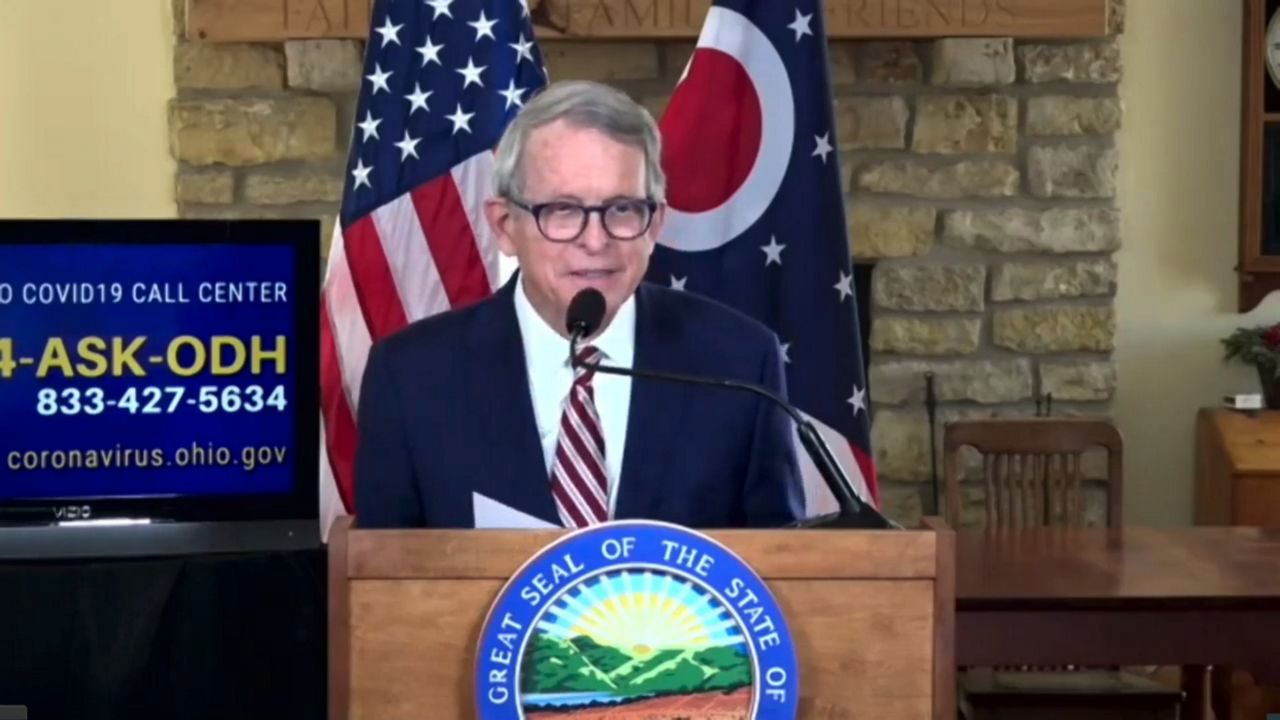COLUMBUS, Ohio — Gov. Mike DeWine said Tuesday he fears a more contagious COVID-19 variant could become dominant in Ohio within two months, reacting to the discovery of new strains in Ohio.
“It’s here, and if it follows the pattern that we’ve seen in other countries, like the U.K., within two months it becomes the dominant strain,” DeWine said. “If anybody needs an incentive to get the vaccine, that should do it.”
The governor asked Ohio Department of Health Chief Medical Officer Dr. Bruce Vanderhoff Tuesday when he thinks a more contagious variant could become dominant in Ohio.
“Experience suggests these more contagious strains will become dominant quickly, maybe just in several weeks,” Vanderhoff said. “At a high-level, what we're seeing is that SARS-Cov-2, the virus that causes COVID-19, is changing through a natural process of mutation to become more contagious. And it's happening not just in far-flung corners of the globe, but right here in Ohio.”
The discovery of virus mutations in Ohio was first reported last week by Ohio State Wexner Medical Center researchers who have been sequencing COVID-19 samples with added urgency ever since a more contagious variant was reported in the U.K.
Wexner found one sample, from an elderly woman, that looks eerily similar to the U.K. mutation. However, the virus was found on the “backbone” of a United States variant. In other words, scientists believe the mutation occurred independently in the U.S.
Separately, Ohio State found a more prevalent new strain in its sequencing research. That strain may also be more contagious, the researchers and state officials are saying.
“Ohio State also reported that for a few weeks most of the virus currently circulating in Central Ohio has been yet another strain, a strain the Centers for Disease Control and Prevention is seeing across the Midwest, and this strain has yet another set of mutations in the spike protein, which are also believed to make the virus more contagious,” Vanderhoff said.
According to the Ohio State researchers' preprint, their sequencing efforts indicated a shift in December.
"The week of Dec. 21, Ohio State’s lab detected this second variant in 10% of samples. The figure rose to 30% the following week, then to 60% the next," they wrote.
The researchers hope to look at more samples in the coming weeks to get a more complete picture of what the area is facing.
The governor did not indicate that any new measures were under consideration to respond to the presence of new strains in Ohio, but he said the news adds urgency to the vaccination effort. And he said it is a good reminder to wear a mask.
"The one thing that we have to worry about is it is believed to be much more contagious, and more contagious than what we've already been dealing with, which is something that already is contagious,” DeWine said.
During the governor’s news conference Tuesday, DeWine reported a disappointing update after a discussion with federal officials, sharing that the state was misinformed regarding the vaccine stockpile.
“It would appear there is not a huge stockpile. That’s at least what our understanding is,” he said.
This update comes after DeWine said he expected more than 350,000 doses to be released to Ohio from a “bank” following tjhe accouncement of a federal change to hold back fewer shots.
Officials were hoping those doses would help the state pick up its pace of vaccination. For now, vaccine supply remains limited, and some seniors will have to wait a couple more weeks for their turns, DeWine said. The state began offering vaccines to seniors 80 and older on Monday.
DeWine said vaccine supply is unlikely to improve until potentially March when he hopes the Johnson & Johnson vaccine will be authorized.
The governor said reopening schools remains a top priority and he is looking forward to beginning school staff vaccinations in February. DeWine said 96% of public school districts have committed to offering some in-person school by March 1, which is a requirement in Ohio for school staff to get vaccinated.
Ohio reported 4,989 cases, 55 deaths, and 254 hospitalizations on Tuesday, and the 7-day case average has dropped to 6,160, down from 8,276 a week ago. But DeWine said it is too early to know what the drop means.
“The past three or four days, I think, we've seen kind of a downward trend. We hope that that’s the trend, but we really don’t know,” he said.
